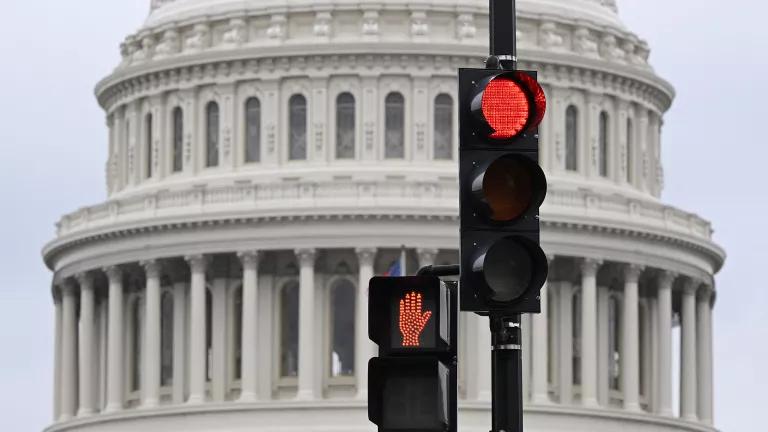Report Finds Neonics Pose Big Risks to Bees as Losses Mount
Summertime is normally a great time for bees, but last summer saw record bee losses. A new report from Cornell may shed light on why.

Summertime is usually a great time for bees. But it wasn't last year.
For the second year in a row, National Pollinator Week has brought bad news for bees. According to the annual honey bee colony loss survey, beekeepers suffered their second highest yearly losses ever recorded, losing 43.7% of their colonies from April 1, 2019, to April 1, 2020.
Just as alarming is what the numbers suggest about how the bees died. Despite having a better-than-average winter (although still terrible by pre-2006 standards), bee colonies perished in the summer at the highest rate ever recorded by the survey. This means that fewer colonies succumbed to the winter cold—historically, the most common natural cause of bee colony loss—but many more died when the weather was warm and flowers were in bloom. This suggests that man-made causes, such as pesticides, are the likely culprits.
Almost as if on cue, Cornell University published a long-awaited report on neonicotinoid or “neonic” insecticides—a leading factor in mass pollinator die-offs worldwide—shortly after the loss numbers were released. The report looks at neonic use in New York, focusing on the risks of those uses to insect pollinators (e.g., the ~400 wild bee species in NY) as well as the economic benefits (or lack thereof) to users. While we’re still digging into the report’s 400+ pages, some familiar themes stand out:
- Neonic Treated Seeds Are Big, Bad, and Wasteful: Neonic seed treatments—where the neonic chemical is painted on a crop seed before planting and literally soaked up through the roots as the plant grows—in corn, soybean, and wheat pose “substantial” risks to bees, with no consistent benefits to farmers. Corn and soybean treatments alone represent 73% of the neonics used in New York agriculture, and cover hundreds of thousands of acres, making treated seeds perhaps the largest, most harmful, and most needless use of neonics in New York State.
- Lawns and Gardens Can Harm Bees: The report finds high risks to bees and other pollinators from ornamental and landscape uses—think lawns, golf courses, and manicured corporate gardens that cover vast areas of the state. And although neonics may make sense for a “small proportion” of these uses, most are replaceable with safer alternatives.

This well-manicured garden looks lovely, but it could be deadly for bees if treated with neonics.
- Some Neonics Are Worse Than Others: Some neonics (a.k.a., nitroguanidine neonics such as imidacloprid, clothianidin, and thiamethoxam, which are commonly used in New York) are more toxic to bees than others (such as the cyanoamidine neonic acetamprid). The EU and Canada have already recognized this by moving to ban outdoor use of the more toxic nitroguanidine neonicotinoids.
As important as what’s in the Cornell report, however, is what is NOT in the report. While much attention rightly focuses on neonics’ harms to pollinators, we know the problem is Bigger than Bees. A flood of recent science shows how neonics harm bird, fish, deer and other wildlife populations, and extensively contaminate New York water—especially on Long Island where neonics show up in nearly a third of state and federal ground water samples.
Neonics are now so ubiquitous in the environment and our food and water that the CDC reports half the U.S. population is exposed on a regular basis—a concerning statistic given research indicating neonic exposures may increase the risk of human neurological and developmental harm, including malformations of the developing heart and brain, memory loss, and tremors (see here for more info).

Neonics frequently show up in New York waters, including nearly a third of Long Island groundwater samples.
Worse yet, the Trump EPA recently proposed allowing continued widespread use of neonics with minimal new restrictions, despite identifying numerous risks of concern to bees, other wildlife, and people. The agency also failed to apply mandatory protective factors under the Food Quality Protection Act, violating federal law and leaving pregnant women and children at risk.
However, as shown time and again, New Yorkers aren’t afraid to stand up to protect the environment and their communities, especially in the face of a listless EPA. The new Cornell report provides plenty of ammunition to demand action from New York lawmakers. In fact, legislation like the Birds and Bees Protection Act—which would impose a 5-year moratorium on most outdoor neonic uses—is already on the table and, if ultimately successful, would address many of the potentially dangerous impacts from neonic use.
With bees still dying in record numbers, and the science continuing to point the finger at needless neonic use, real change cannot wait. New York must act to protect its pollinators, clean water, ecosystems, and people by reining in rampant neonic use.

These bees need your help. If you live in New York, demand action from your lawmakers.



